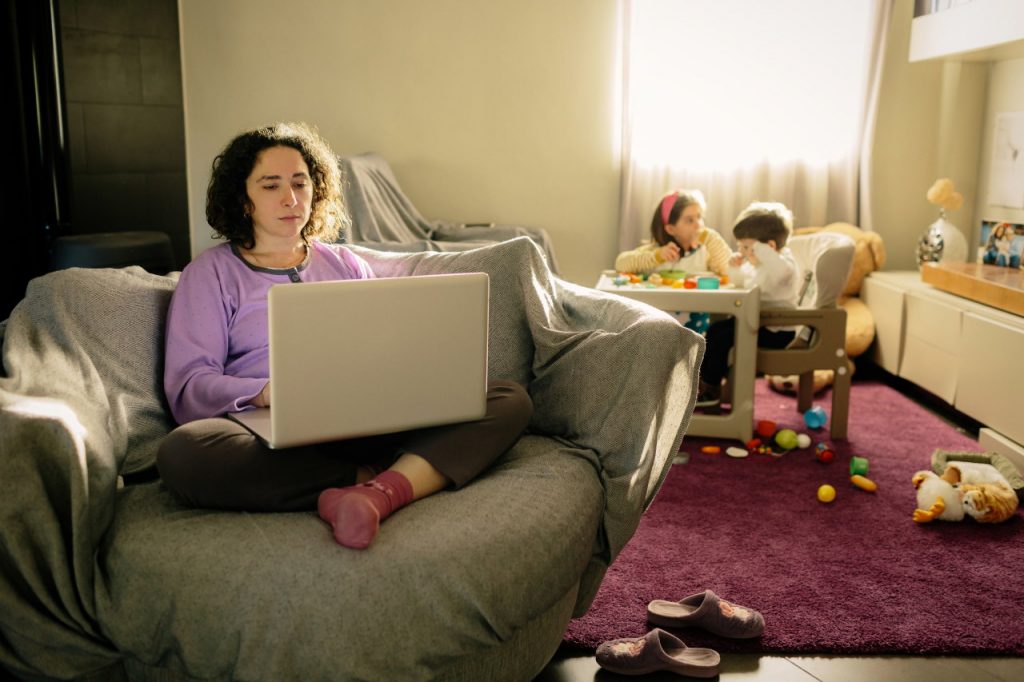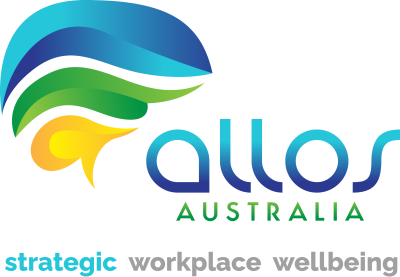With the panic of the pandemic fading, employers and employees are trying to settle on a new way of working. All signs point to some type of hybrid arrangement which permits flexible working, greater work life balance, and a better employee experience. However, hybrid work is not without risk. In many cases, company culture will be irrevocably changed. Productivity is proving to be a mixed bag, especially when it comes to collaboration; meanwhile, for many, the hybrid work schedule results in longer working hours than traditional office work, lower levels of employee engagement, and greater levels of burnout.
Clearly, the world of work is at a critical juncture and the pressure is on leaders to navigate this period skillfully. While there’s no end of opinion and conjecture on the internet, we decided to cut through the noise and go straight to an expert whose predictions early on in the pandemic about remote work, productivity and company culture proved eerily accurate.
The expert in question is Dr Richard Claydon. He teaches the leadership module for Macquarie Business School’s world-leading, future-focused Global MBA. Beyond that, he is a transdisciplinary behavioural scientist and Chief Cognitive Officer of EQ Lab, an extended intelligence network focused on the future of leadership, culture, management, engagement and risk. His research on value-creating behaviours in toxic, rigid or autocratic organisational environments has been described as “a touchstone for future work in management and organisation”, “outstanding in daring and imagination” and “thinking at the forefront of modern discussion and debate”.
So his rap sheet is impressive enough, but what we really wanted to know was how he was able to accurately predict the counter-intuitive patterns in productivity, that even some of the top global consultancies missed. “It’s all there in the research literature.” He responded. “All anybody needs to do is read it.”
Based on that response, we knew we had to pick his brain further. Here’s the result.
What’s at stake in switching to a Hybrid Work Model?
In short, it’s a key weapon in the war for talent. If you do not offer some kind of personalised flexibility, in which work and life can be effectively integrated, you will struggle to attract the type of talent necessary to scale your business. The data suggests that the employees most likely to refuse to work for non-hybrid organisations are customer-facing, customer-supporting and digital/IT workers. Without being able to source people to do such work, it is going to be next to impossible to grow a business. With pandemics historically being followed by economic rebounds, these multidimensional and unpredictable talent expectations need to be addressed if an organisation is to be ready to take full advantage of such circumstances.
The data suggests that the employees most likely to refuse to work for non-hybrid organisations are customer-facing, customer-supporting and digital/IT workers.
What Are the Pros and Cons of Hybrid Work for Employees?
Why do employees prefer the hybrid workplace?
The most-commonly reported reason is the reduction of the stress of the commute. But that’s so cliched as to be almost banal. There are a number of other reasons clearly outlined in pre-pandemic literature on remote working that differentiate between effective and ineffective remote working practices. If the 3Fs are present, remote work increases productivity and engagement. If not, then both go backwards.
The 3 Fs: Focus, Flexibility, Freedom
Focus: contemporary open-plan office designs do not facilitate the level of concentration required to do complex, focused work. Employees find it far easier to do such work in the peace and quiet of home. In the early stages of the pandemic, many employees reported finally being able to catch up on projects because they had the time and space to do it.
Flexibility: most employees are far more productive and engaged when they have the opportunity to determine how the work is to be done. In offices, they very often feel over-or-micro-managed in terms of how they should do the work, often in ways that don’t make intuitive sense to them. As long as remote employees have easy online access to the technology and media they require to do the work, then their productivity and engagement are likely to improve.
Freedom: there is the opportunity to integrate more life demands, such as shopping, fitness and health, family, hobbies, even sleeping, with work demands. Research has long illustrated that this is a central advantage of working from home, providing both employee and employer with significant benefits.
Alongside this is a more radical reason. Research in the UK has clearly shown that employees are not missing the organisational culture. Fewer than one in ten employees cite the great culture as a reason for wanting to return to the office. Indeed, it seems that many have revelled in escaping from it. With culture being the main behavioural lever, some radical reimagination of the behavioural environment is going to be required.

With culture being the main behavioural lever in the vast majority of organisations, some radical reimagination of the behavioural environment is going to be required.
Why is hybrid work proving to be exhausting for employees?
There are a number of reasons.
Firstly, impractical and outdated business as usual models of working have reinjected themselves, fundamentally changing the WFH experience. In the early stages of WFH, when less digital infrastructure was in place, employees WFH experienced a great degree of self-management, doing their work via the above 3F methodology. As the infrastructure has emerged, employees are finding the WFH experience is becoming an amplified version of their prior poor office experience, with all the downsides and none of the upsides.
Cyberspace amplifies both the bad and good aspects of the real world. If meetings seem boring, disorganised and pointless in the real world, in the digital one they will be akin to having teeth pulled without anaesthetic. If communication is unclear and imprecise in the real world, in the digital one it will be incoherent and fragmented. The impact is enhanced complexity and emotionality for everybody.
Beyond that is the problem of drudgery. No matter what type of thing you are working on, the experience is the same. Present an idea. Brainstorm. Listen to a valuable speaker. Every experience is bracketed by switching on a screen and staring at a small window, before switching it off again to stare at your bedroom or kitchen walls. There’s no variety. Especially so if all the freedom and flexibility in how to work has been taken away by micromanagement.
This is amplified by the inability of employees to take part in transitional role-switches between the role they are playing in one meeting and the next, or the role they play at work and at home. Moving from meeting to meeting requires the flick of a switch, without any chance of movement between offices and light-hearted chat between colleagues (which is something the UK research on returning to work highlighted as being absolutely missed by over 60% of the workforce). Partners and children see their other half or parents in work roles, and perhaps do not like what they see. There is no decompression time between work and home, with people simply needing to turn off the computer to be at home. Rapid-transition role-bleeding is, for many, a deeply stressful experience that takes a significant amount of emotional and cognitive resources to manage. For many, it is exhausting.
Every experience is bracketed by switching on a screen and staring at a small window, before switching it off again to stare at your bedroom or kitchen walls. There’s no variety. Especially so if all the freedom and flexibility in how to work has been taken away by micromanagement.
The outer limits of this is the increase in work hours. For many, it’s the act of starting work at a time that would have been half-way through one’s commute, and finishing at a similar time. An hour or so extra a day. For others, it is an increased willingness to answer emails at any time of the day, until the moment they close their eyes to sleep. This is especially common in English-speaking countries. Much of this is impression management – the desire to illustrate how hard you’re working and how valuable you are to those you cannot impress via face-to-face communication. While it is completely understandable, as research clearly illustrates that those who regularly see their manager get the best opportunities, it also predicts poor productivity and engagement, increasing the likelihood of exhaustion and burnout.
Finally, for some senior executives, with a global reporting role, international time zones have blended together, with executives at the HQ calling all-hands meetings in the late evenings or early mornings, often every day of the week. The worst example we’ve seen was a New York based company keeping their Australian employees on the call until 05:00 in the morning. This is not impression management, but a loss of awareness on how hard anybody can work, caused by the shrinking of the world by the rapidly introduced digital infrastructures. Behaviours have yet to catch up. Once again, exhaustion and burnout are the likely outcomes.

What Are the Pros and Cons of Hybrid Work for Employers?
There are cost savings to be made and communication and well-being challenges to be considered. Clearly, if an organisation can reduce its real estate footprint by having a lot of its workforce WFH, it is going to reduce financial costs. However, it has communication and well-being knock ons.
At an extended level, in which diverse, innovative ideas are being integrated into the work to create new value, we are then talking about the best teams being 50-100x more valuable than the average.
In offices, people can quickly deal with communication necessities. A 60-second conversation with a colleague can result in much value. In written communication, the same 60-second message can be spread across multiple emails, with misinterpretations and requests for clarification extending the exchange to an almost absurd level. This slows down performance and negatively impacts collaboration. The excessive need for such clarifying communication extends the working day, harms working relationships, causes cognitive overload, and, eventually, impacts well-being.
Alongside this is the necessity for centralised communication to be more carefully crafted and more regularly disseminated. While some employees read this, not all do. So information quality is compromised. Not only that, much of the high value communication is spread between employees via informal channels in liminal spaces such as coffee shops, bars, and cafes in or around the workplace. Other than via text messaging groups such as WhatsApp and Slack, which suffer the same clarity of communication challenge outlined above, these channels do not exist in a WFH environment.
How does Hybrid Work Impact Productivity?
Done well, hybrid work can boost individual productivity and collective performance.
Firstly, it is important to understand the difference in terms of value creation. At an individual level, the most productive workers are 2.5x more productive than the mean, and 10x more productive than the least productive workers. At a collective level, this amplifies to the most high performing team being 10x better than average teams, and many, many times better than the worst teams. At an extended level, in which diverse, innovative ideas are being integrated into the work to create new value, we are then talking about the best teams being 50-100x more valuable than the average.
Individual productivity requires:
- Large dedicated work spaces in which work can be spread and left
- Low distraction and low interruption environments
It won’t take anybody much time to realise that very few contemporary workplaces are designed to support such work. Why is that? In simple terms, because people were trying to boost collective performance. Research showed that team members that couldn’t see each other didn’t talk to each other. Remote workers often never spoke to their teammates at all. So, workplace design shifted into open-plan spaces in which people’s line of sight enabled them to see pretty much everybody. Following that came the idea of serendipitous connection, in which people who didn’t know each other could strike up value-creating conversations if only they could just bump into each other. Enter the hotdesk and flexible working environments. Given that such environments also reduced costs by eliminating walls, shrinking desks and enabling more people to occupy an office, it seemed a win-win for CFOs.
The Dual Productivity Problem
One, it absolutely killed workspaces enabling high productivity. Everyone lost their dedicated desks and had to work on small, non-dedicated desks that had people milling around them distracting and interrupting the worker. Such environments either correlate with or are causal of low productivity. Two, was that, in order to remain productive, everybody did their best to not be noisy. Instead of collaborative chat going up, it went down, with one report suggesting a 71% drop in face-to-face communication and a 67% rise in emails, even between employees who could see each other. People began to stay at their desks longer and longer, remaining throughout lunch, so (a) they gave off the impression of working hard, and (b) they didn’t lose them to another worker after they stepped away too long. While the idea of open-plan seemed great, in practice it was another thing entirely.
Nobody has yet worked out how to recreate the brainy geeks ideating around a whiteboard environment digitally. While there are methodologies for doing so out there, they haven’t yet been embraced commercially.
Moving to hybrid solves one of these problems. People WFH do not have to worry about the distractions and interruptions, or having to tidy or losing their desk whenever they walk away. For many, WFH allows them to operate in a more productive environment, with a bigger desk, better screens, and a space they can spread into.
However, it hasn’t solved the other. Despite the development of digital collaboration tools, collective performance has, at worst, gone backwards and, at best, stayed still. Nobody has yet worked out how to recreate the brainy geeks ideating around a whiteboard environment digitally. While there are methodologies for doing so out there, they haven’t yet been embraced commercially.
As for the top-end innovative value creation, very few organisations could do that prior to COVID, and certainly haven’t advanced their ability during the pandemic. Doing this type of work better required and still requires a radical shift.

How to make a hybrid workplace model work for your business?
Design the right hybrid workplace
Create environments that support individual productivity – large, dedicated desks with ergonomic furniture, two monitors, easy access to the requisite technologies and media, and the freedom to decide where, when and how to do the work in accordance to the deadline date. If it is too expensive to create such environments at the office, then help employees with enough home space to do so at home. Consider booking cheaper spaces in local co-working operations for employees not wanting long commutes but unable to create high productivity spaces in their home environment.
Create environments in which small teams of people can do energetic and energising collaborative work. Most of the work surfaces in such spaces should be low tech and vertical, such as high-end, moveable whiteboards. They should be equipped with pens, paper, sticky notes, comfortable seating, and perhaps even some speakers to generate some background noise. Teams should be able to quickly and painlessly access such spaces for short time periods.
Create war-rooms for high-end, wide-scale collaboration, which can be booked for days at a time.
Create environments in which small teams of people can do energetic and energising collaborative work. Most of the work surfaces in such spaces should be low tech and vertical, such as high-end, moveable whiteboards.
Create a culture where everyone can work from anywhere
Culture is perhaps the wrong term. Start thinking of your organisation as a networked behavioural environment, in which every team develops its own interpretations of how to best do work. Collate and disseminate the ways that have worked via a communication network, so teams can rapidly learn and apply different ideas.
Switch from synchronous to asynchronous communication
Become aware of time zones and employee life requirements. Make it absolutely clear that you do not expect employees to read or reply to emails outside of reasonable times. Let people know that they are being trusted to self-manage asynchronous work, and to reach out for help without risk of censure if they are struggling to finalise a task for agreed deadlines.
Alongside that, absolutely prioritise collective synchronous opportunities to meet, chat and socialise, keeping agendas fixed on problem-solving and human connection rather than status updates and business as usual reporting. If it is either of the latter two, it should be dealt with via dashboards.
Switch from impromptu to intentional collaboration
Part of the prioritising of collective synchronous work relates to having some simple and clear reasons for spending time together. A long, complicated agenda immediately disables the chance of meaningful and value-creating collaboration. The agenda focus should be on problem-framing, problem-solving, and ideation. If you cannot write a clear problem-statement and explain it as a story, you shouldn’t be calling for a collaboration.
If you cannot write a clear problem-statement and explain it as a story, you shouldn’t be calling for a collaboration.
Is your technology ready for the hybrid model?
Generally, it isn’t the technology that isn’t ready, but how it is being used that is inadequate. You can create exceptional hybrid environments using basic Zoom and Teams installations, and shared documentation, without needing any further apps. Any form of routinised reporting should be turned into a dashboard.

What Does a Hybrid Work Model Look Like in Practice?
We’ve been doing hybrid work for decades anyway. Workplace strategy already assumes no more than 65% of employees will be in the office at any given time. So you’re probably already doing a version of it. It’s just about doing a little more.
Popular hybrid work model structures
The Results Only Work Environment (ROWE) is a well-supported example. In ROWE workplaces, people are trusted to do all their work at the time, place and way that best suits them and their lives. As long as deadlines are hit, how the work gets done doesn’t matter.
The challenge of such environments can be that employees work too long and end up burned out, as they lack essential self-management skills. Very few managers are comfortable managing ROWE, as it is so alien to their development and training.
The challenge of such environments can be that employees work too long and end up burned out, as they lack essential self-management skills.
Most academic institutions have been hybrid for years, with academics and students working from all kinds of different spaces, and only collecting together for lectures and tutorials. In fact, many young employees will be so familiar with that dynamic that returning to it will be easy.
Variations of the hybrid model
Most of the popular stuff about hybrid is arguably focusing on the wrong thing.
At-Will and Remote-First Models allow employees to prioritise working remotely. Those who want to work from home can choose to do so, while those who want to work at the office can also choose to come in. The problem is fragmentation of experience. Many people who come to the office then sit in a room having video calls with those who want to work from home. This solves nothing.
Office-first models are based on the assumption that all the work is collaborative. Sometimes this is true. However, in most cases, a good degree of the actual work done is done alone in front of a computer screen. Paradoxically, getting people to always be in a shared space because their work is “collaborative” might actually hinder things being done.
Many people who come to the office then sit in a room having video calls with those who want to work from home. This solves nothing.
Split-Week Models were useful mission critical solutions to the pandemic. They could still be highly useful if teams do require a mix of individual and collective work, and arrange work around their office access. Week-by-week models offered the same mission critical solutions, but might be less suitable going forward as it prevents any flexibility in terms of suddenly needing to collaborate.
Designated teams models, in which some teams always work at the office and others always work at home, decrease costs but engender the impression management and burn out challenges described earlier. Those out of office will feel their career progression is at risk.
How to implement a hybrid working policy
What to do if some employees don’t want to return to the office?
As the pandemic peters out, this will be less of a problem. For some employees in roles that don’t require interactive collaboration, or when talent is difficult to source, it might be a useful solution. There are many stories of neurodiverse employees thriving in such conditions. However, these are likely to be special cases.
In general, most contemporary roles require a mixture of individual and collaborative practice. Employees that are unwilling to try and create value across both dimensions are, long term, going to suffer career limiting consequences.
In general, most contemporary roles require a mixture of individual and collaborative practice. Employees that are unwilling to try and create value across both dimensions are, long term, going to suffer career limiting consequences. If we cannot solve the digital collaboration problem, most employees are going to have to work in a shared space at least some of the time.
What to do if you feel pressured to return to the office but don’t want to?
Look at the work you are doing and determine if it requires better interactive collaboration, or whether the vast majority relates to individual productivity. If the former, either experiment with different digital collaborative methodologies, or look at coming to the office for intentional collaborations on a case-by-case basis. If you are still being pressured, and work in a talent-desirable role, then there will be hordes of companies willing to snap you up.
This hard fact is something that those pressuring employees to come back to the office need to be aware of. There is a deep shortage of digital and future-ready talent, and companies being more progressive in their thinking about hybridization are going to have the first choice of these workers, and easily tempt them away from more traditional environments.
What Are some Common Myths about Hybrid Work?
The one big myth is that hybrid work is somehow new or different. We have been doing this for years. It’s just been amplified. Don’t fear it.
If you would like further insights on how your organisation can get hybrid work right, you can get in touch with Dr Richard Claydon on Linkedin and at EQLabs.

